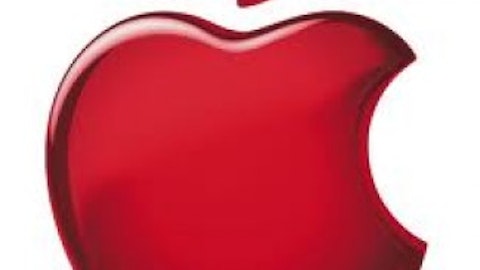With QE3 now an announced fact, gold has come back into the spotlight. While the actual historical performance of gold as an inflation hedge is more mixed than some goldbugs realize, the reality is that gold has done pretty well during most prior periods of monetary stimulus. Moreover, with the ongoing uncertainty regarding the economic health and future of Europe, the United States, Japan and China, gold’s demonstrated value as a hedge against uncertainty may also come into play [for more gold news and analysis subscribe to our free newsletter].
Investors have a variety of ways to use gold to enhance or secure the performance of their portfolio. Here are five names to consider.

Get Physical
If investors want to own gold, without actually owning the ingots, rounds or coins themselves, consider one of the physical gold ETFs. The SPDR Gold Trust (NYSEARCA:GLD) is far and away the largest, with over $74 billion in assets (making it one of the largest gold owners in the world). The iShares Gold Trust (NYSEARCA:IAU) is smaller (about $11.4 billion in assets), but the expense ratio for IAU is a little smaller (0.25% versus 0.40% for GLD). Curiously, both have tracking errors in excess of 1.2% [see also Why No Investor Should Own GLD].
Looking to the Future
While the physical gold bullion trusts have proven to be very popular with investors, there could be at leastone reason to consider a futues-based ETF like UBS Gold Total Return ETN (UBG). The problem with a futures-based fund like UBG is the costs that go with the processing of rolling over the contracts each year. In low interest rate environments (like today), these funds can’t earn meaningful interest to offset that cost. But, if rates were to increase, this fund could get more interesting. It’s also worth noting that the expense ratio of this fund is low (0.3%) and there is no tracking error, but its status of an ETN does mean that there is credit risk.
Look To The Miners
If QE3 and worries of future interest rate turbulence push gold higher, it stands to reason that gold miners will also prosper. But investors should look carefully at the details before buying into a mining ETF. Market Vectors Gold Miners (GDX) isn’t a bad fund, but 25% of the fund is invested in two stocks (Barrick Gold (ABX) and Goldcorp (GG)) and the fourth largest holding, Silver Wheaton Corp. (NYSE:SLW) is more famous for silver than gold.
By comparison, both iShares Inc. (NYSEARCA:RING) and Global X Funds (NYSEARCA:GGGG) are more dedicated to gold, but not without some flaws as well. Both are very small and illiquid funds. And while RING does offer a lower expense ratio, it has the same sort of high exposure to Barrick and Goldcorp as GDX [see also George Soros Eats Own Words, Doubles Down On GLD].
Hand Picking Miners
Investors can also choose to invest in the stock of an actual gold mining company. There are 25 gold miners with market caps above $3 billion, so it is not as though investors don’t have a wide range of choice.
While a discussion of how to pick a good mining company stock is an article in its own right, there are a few general guidelines to follow. Companies with large reserves and low cash operating costs are generally safer picks, but companies with more marginal operating cost structures will tend to outperform in a rising gold market. Investors should also examine a company’s hedging strategy – the more hedging a company does, the more predictable its cash flow, but again at the cost of less leverage to rising near-term prices. Kinross Gold Corporation (NYSE:KGC) and Yamana Gold Inc. (NYSE:AUY) are just two of many potentially worthwhile names to investigate further.
This article was originally written by Stephen D. Simpson, and posted on CommodityHQ.





